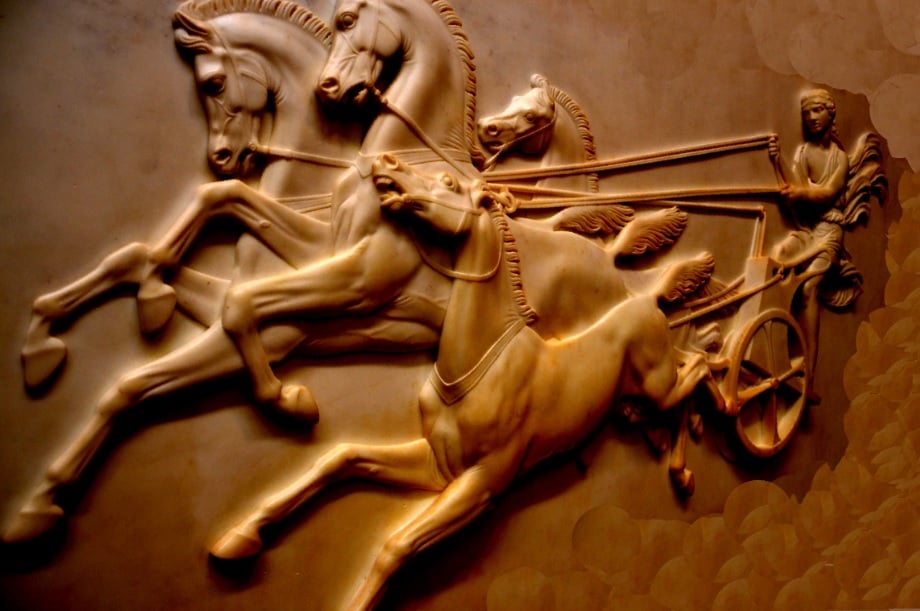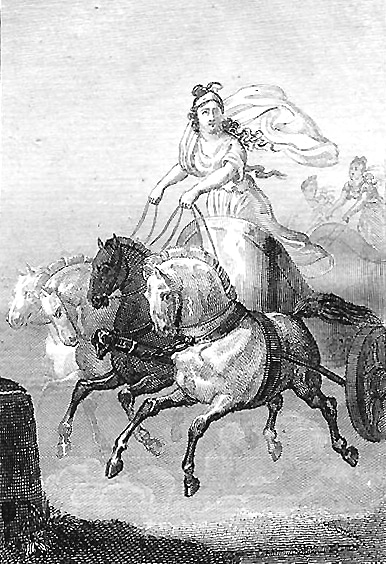Table of Contents

Kyniska, a Spartan princess went down in historical past right after getting to be the 1st woman to gain the Olympics in historic times.
By
Kyniska (or Cyniska), a Spartan princess, was the daughter of King Archidamus II and sister to King Agesilaus.
She owned a sizable estate the place she bred, raised and trained horses, and in 396 BC, when she was possibly concerning 40 and 50 many years previous, she became the first girl to take part in the Olympic Games.
Spartan tradition thought more powerful youngsters occur from moms and dads who had been each potent, an uncommon idea in Historic Greek society as a total. Spartan authorities encouraged ladies to teach both thoughts and body.
Not like Athens and the other Greek town-states in which ladies had been concealed from the general public and acquired only domestic abilities, Sparta held races and trials of energy for girls as well as boys.
Kyniska’s childhood would have been full of athletic education: jogging, leaping, throwing the discus and javelin, potentially even wrestling.
Spartan women married later, letting a lot more years for education. Aristocratic girls these kinds of as Kyniska realized poetry and also experienced to dance and sing competitively, so she might have even been literate.

Kyniska of Sparta had prosperity and position – but it was her ambition that designed her a legend.
This ambition drove her to compete in the four-horse chariot race, or tethrippon, at the Olympics in 396 and 392 BC.
Her chariot group gained both equally moments.
No females permitted
This feat was primarily remarkable due to the fact females could not even phase foot on the sacred grounds of the Olympic Sanctuary during the festival. Married ladies ended up forbidden on penalty of death from even attending as spectators.
To contend, Kyniska cleverly exploited loopholes.
In sports activities like wrestling or javelin, the victors competed individually on the field. In the chariot race, the winners had been the horse homeowners, not the drivers – who had been almost generally slaves. A great deal like with the present day Kentucky Derby or Melbourne Cup, the victors are the horse and its operator, not the rider.
Kyniska did not have to drive the chariot to earn.
In truth, chariot team entrepreneurs did not even have to be physically current at Olympia through the video games. Kyniska could enter her chariot team in the race without at any time environment foot on the forbidden sacred grounds.
But Kyniska’s purpose was not top secret. Information of an Olympic victory was carried by fleet messengers to the victor’s residence metropolis, in which preparations to rejoice their return ended up started at after. Information that a lady had won an Olympic contest would have unfold quickly.
What motivated a Spartan royal to split by way of the complicated glass ceiling of male-dominated Olympic levels of competition and culture? The scant resources we have offer you distinctive opinions.
The Greek author Pausanias stated Kyniska had own ambitions to win at Olympia, but Xenephon and the philosopher Plutarch credit history her brother, King Agesilaus, for pressuring her to compete.
The answer may well entail a bit of both of those.
The legacy of Kyniska the princess of Sparta
Several historic Greek gals received Olympic victories right after Kyniska, but none have been as well-known as she.
Kyniska erected at minimum two lifetime-dimension bronze statues of herself at Olympia. The inscription on a remaining fragment of her marble statue base reads:
“Kings of Sparta had been my fathers and brothers. I, Kyniska, victorious at the chariot race with her swift-footed horses, erected this statue. I declare that I am the only female in all Greece who gained this crown.”
Kyniska plainly relished her fame. Agesilaus may well have been the catalyst, but Kyniska herself most likely made a decision to compete – at minimum the 2nd time.
Other gals would go on to compete in the chariot races, and by the 1st century Advertisement ladies ended up competing straight from males in foot racing activities – and successful.
The point Kyniska didn’t physically contend has brought about history to lower price her achievements, but this argument marginalizes her bigger accomplishment. Amid massive cultural limitations, Kyniska broke gender norms and glass ceilings.
By boldly and proudly celebrating her trailblazing victories with commemorative statues, she transmitted this message to girls across the Greek entire world.
Fueled by Spartan pleasure, Kyniska’s accomplishment to be the first lady to compete, and get, in the male-only Olympics is a startling and unforgettable achievement that deserves a outstanding place in Olympic lore.
. This report was printed at The Dialogue and is republished beneath a Resourceful Commons License.

